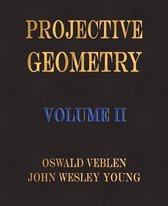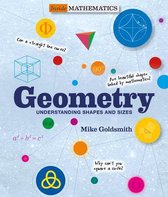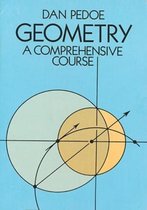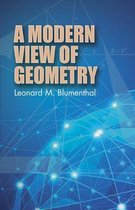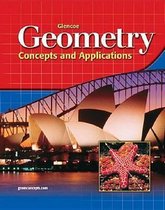Projective Geometry - Volume I
Afbeeldingen
Sla de afbeeldingen overArtikel vergelijken
Auteur:
Oswald Veblen
John Wesley Young
Co-auteur:
Oswald Veblen
John Wesley Young
- Engels
- Paperback
- 9781603860611
- 06 november 2007
- 356 pagina's
Samenvatting
PEOJECTIVE GEOMETRY BY OSWALD VEBLEN PROFESSOR OP MATHEMATICS, PRINCETON UNIVERSITY AND JOHN WESLEY YOUNG PROFESSOR OF MATHEMATICS, UNIVERSITY OF KANSAS VOLUME I GINN AND COMPANY BOSTON NEW YORK CHICAGO LONDON PREFACE Geometry, which had been for centuries the most perfect example of a deductive science, during the creative period of the nineteenth century outgrew its old logical forms. The most recent period has however brought a clearer understanding of the logical foundations of mathematics and thus has made it possible for the exposition of geometry to resume the purely deductive form. But the treatment in the books which have hitherto appeared makes the work of lay ing the foundations seem so formidable as either to require for itself a separate treatise, or to be passed over without attention to more than the outlines. This is partly due to the fact that in giving the complete foundation for ordinary real or complex geometry, it is necessary to make a study of linear order and continuity, a study which is not only extremely delicate, but whose methods are those of the theory of functions of a real variable rather than of elemen tary geometry. The present work, which is to consist of two volumes and is in tended to be available as a text in courses offered in American uni versities to upper-class and graduate students, seeks to avoid this difficulty by deferring the study of order and continuity to the sec ond volume. The more elementary part of the subject rests on a very simple set of assumptions which characterize what may be called general protective geometry. It will be found that the theorems selected on this basis of logical simplicity are also elemen tary in the sense ofbeing easily comprehended and often used. Even the limited space devoted in this volume to the foundations may seem a drawback from the pedagogical point of view of some mathematicians. To this we can only reply that, in our opinion, an adequate knowledge of geometry cannot be obtained without attention to the foundations. We believe, moreover, that the abstract treatment is peculiarly desirable in protective geometry, because it is through the latter that the other geometric disciplines are most readily coordinated. Since it is more natural to derive iii iv PllEFAOE the geometrical disciplines associated with the names of Euclid, Descartes, Lobatchewsky, etc., from protective geometry than it is to derive projective geometry from one of them, it is natural to take the foundations of projective geometry as the foundations of all geometry. The deferring of linear order and continuity to the second vol ume has necessitated the deferring of the discussion of the metric geometries characterized by certain subgroups of the general pro jective group. Such elementary applications as the metric proper ties of conies will therefore be found in the second volume. This will be a disadvantage if the present volume is to be used for a short course in which it is desired to include metric applications. But the arrangement of the material will make it possible, when the second volume is ready, to pass directly from Chapter VIII of the first volume to the study of order relations which may them selves be passed over without detailed discussion, if this is thought desirable, and thence to the development of Euclidean metric geometry. We think that much is to be gained pedagogioally as well asscientifically by maintaining the sharp distinction between the projective and the metric. 1 The introduction of analytic methods on a purely synthetic basis in Chapter VI brings clearly to light the generality of the set of assumptions used in this volume. What we call general projective geometry is, analytically, the geometry associated with a general number field. All the theorems of this volume are valid, not alone in the ordinary real and the ordinary complex projective spaces, but also in the ordinary rational space and in the finite spaces...
Productspecificaties
Wij vonden geen specificaties voor jouw zoekopdracht '{SEARCH}'.
Inhoud
- Taal
- en
- Bindwijze
- Paperback
- Oorspronkelijke releasedatum
- 06 november 2007
- Aantal pagina's
- 356
- Illustraties
- Nee
Betrokkenen
- Hoofdauteur
- Oswald Veblen
- Tweede Auteur
- John Wesley Young
- Co Auteur
- John Wesley Young
- Hoofduitgeverij
- Merchant Books
Overige kenmerken
- Extra groot lettertype
- Nee
- Product breedte
- 191 mm
- Product hoogte
- 19 mm
- Product lengte
- 235 mm
- Studieboek
- Ja
- Verpakking breedte
- 191 mm
- Verpakking hoogte
- 19 mm
- Verpakking lengte
- 235 mm
- Verpakkingsgewicht
- 612 g
EAN
- EAN
- 9781603860611
Je vindt dit artikel in
- Categorieën
- Taal
- Engels
- Beschikbaarheid
- Leverbaar
- Boek, ebook of luisterboek?
- Boek
- Studieboek of algemeen
- Studieboeken
Kies gewenste uitvoering
Bindwijze
: Paperback
Prijsinformatie en bestellen
De prijs van dit product is 24 euro en 99 cent.
2 - 3 weken
Verkoop door bol
- Prijs inclusief verzendkosten, verstuurd door bol
- Ophalen bij een bol afhaalpunt mogelijk
- 30 dagen bedenktijd en gratis retourneren
- Dag en nacht klantenservice
Rapporteer dit artikel
Je wilt melding doen van illegale inhoud over dit artikel:
- Ik wil melding doen als klant
- Ik wil melding doen als autoriteit of trusted flagger
- Ik wil melding doen als partner
- Ik wil melding doen als merkhouder
Geen klant, autoriteit, trusted flagger, merkhouder of partner? Gebruik dan onderstaande link om melding te doen.
